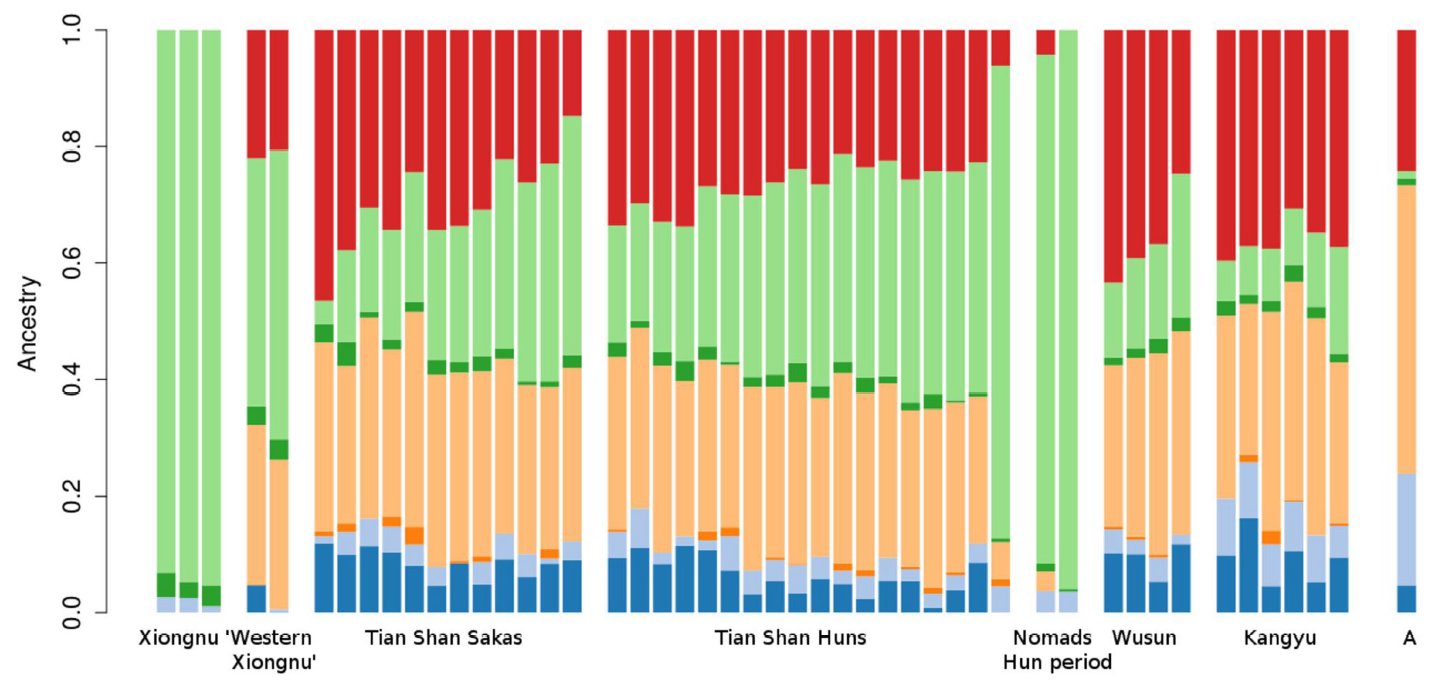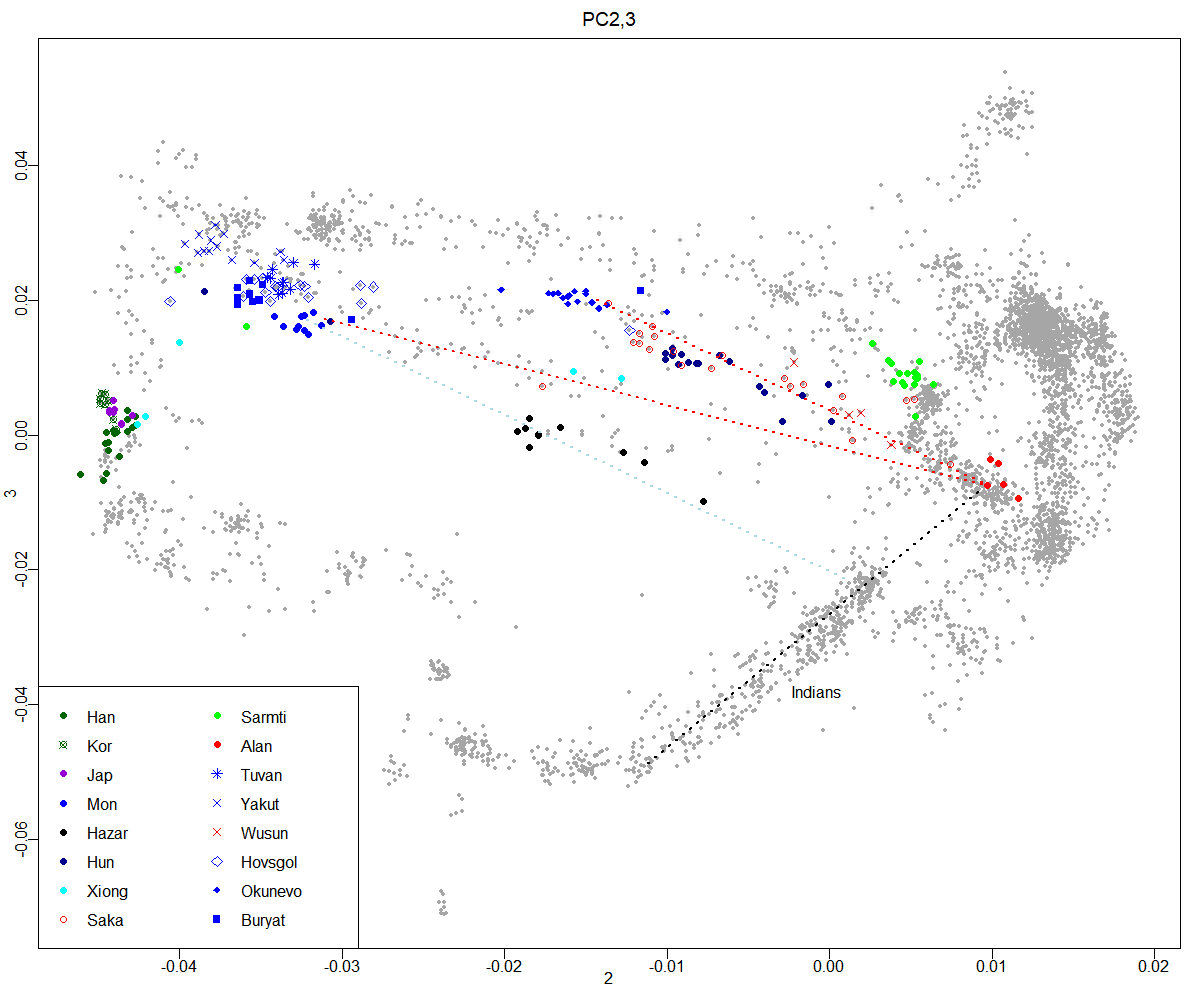Population turnover

- IA (including Tocharians) on the one hand, and huNa-s on the other mixed to produce shaka-s and wusun.
- Hunnic admixture levels: Hun period nomads > Western Xiongnu/ Huns > Tian Shan Huns > Tian Shan shaka-s > Wusun (Between Iranic and IA) > Kangyu (Eastern Iranic) > Andronovo
- The steppe Iranics more and more shifted eastwards (genetically). See ethnogenesis of Turks for details.

Later remnants
- shaka-s + further East Asian (Hunnic) input → uighur (with significant genetic input).
- One branch of the Wusun were absorbed into the Iranic kuShANa-s.
- alan-s / Aryan-s → Ossetians. These were less admixed.
Horse and war
- shAka-s (scythian-s, Skudra – Sogdian – Saka) were early masters of horseback warfare at the end of chariot era
- shaka-s included women warriors who might have inspired Amazon stories, interbred with mongols. Eg. Eastern shAka-s in Altai - YT.
Stirrup
“The invention of the stirrup itself remains murky – it is first seen in India and then in the steppes, yet the first major users of equestrian warfare were the steppe Indo-Iranians like the Shakas and Kushanas. It was from them that it was transmitted to the first Altaic people who became known to the world as the Huns under Motun Tegin, and the Kushanas themselves became the first victims of the Huns. " {MT}
Religion and rituals
- Intro to Iranian religion in the persia page.
- “Darius clearly states that these shaka-s were not Zoroastrians; likely that they followed an Iranian religion closer to ancestral state”, though some of them had Iranic influences. [TW]
- Ritual transmission from shaka-s to the japanese after 250-300 CE [MT]
- Clues:
- [TW] Introduction of horse, with shaka tigrakauda hat/dress.
- ancient mirror used in sun-worship by the Shakas.
Nature of the interaction
“Various steppe powers controlled the border of the steppe-land and the settled zone. When previous steppe powers penetrated deep into settled civilizational centers they either had to give up their steppe centers or at best conduct some raids and retreat to their steppe-land domain. Those groups that did establish themselves in the non-steppe zone essentially gave up their connection to the steppe-land even if they reproduced many aspects of it in their new homelands. This is poignantly seen in the early Indo-European peoples including our own Aryan ancestors who settled in India. The later waves of their successors like the Śaka-s and subsequently groups like the Huns also fall into the above pattern. The only possible exception were the Kuṣāṇa-s who did achieve something like what the Chingizid Mongols did albeit on a clearly smaller scale. Importantly, they could not hold their original steppe centers close to Mongolia, which they lost to the Altaic peoples. Further, they could bridge their successes in the eastern and western steppes and India into a completely stable coherent unit only for a brief period. In contrast, with Chingiz Khan and his great successors we see a program for the complete conquest and control of civilizational centers of the settled world into a system of rule from the steppe.”